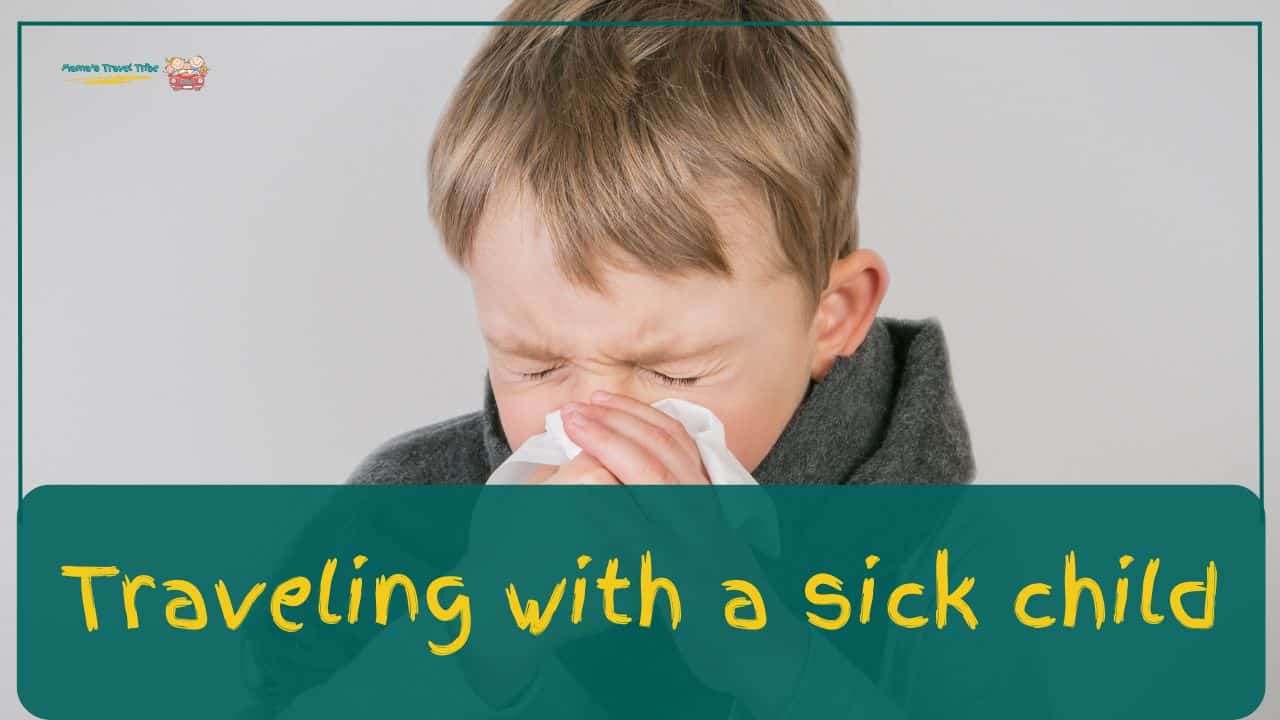Traveling with sick children can be really challenging. But don’t worry, I’ve got you covered with tips to make the journey easier and safer. From packing essentials to keeping your child comfortable, this guide has everything you need. Let’s dive in!
Traveling With Sick Child: Tips Before the Trip (Preparation)
If traveling with a sick child, consult your doctor before the trip to ensure it’s safe to travel. Pack all necessary medications, including prescriptions and over-the-counter remedies. Bring a copy of the child’s medical records and insurance information. Also, keep hydration items and comfort foods readily accessible.
Consult Your Pediatrician

Before you even think about packing, make sure to check in with your child’s pediatrician. I can’t stress this enough. If your child isn’t feeling well, their doctor is the best person to advise you on whether it’s safe to travel.
Sometimes, a doctor might suggest delaying the trip or provide specific instructions to make sure your little one stays as healthy as possible. They might also have recommendations for over-the-counter medications or treatments to bring along.
Remember, you’re not alone in this. Your child’s doctor wants to help keep your family safe and healthy, so don’t hesitate to reach out to them before your journey begins.
Pack Medications
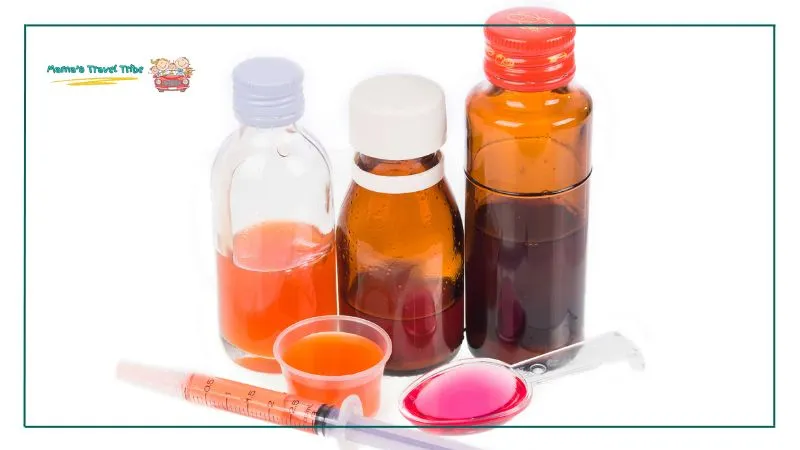
One of the most important things to do when traveling with a sick child is to pack all necessary medications. You want to be prepared for anything, right? Make sure you have all prescription medications in their original containers. This makes it easier if you need to show them at airport security or if you need to get a refill.
Don’t forget to bring any over-the-counter drugs your child might need, like fever reducers or allergy medicines. Having a copy of the prescription is a smart move, too. It’s a small step that can save you a lot of hassle if you run out or lose a medication while you’re away.
Medical Records
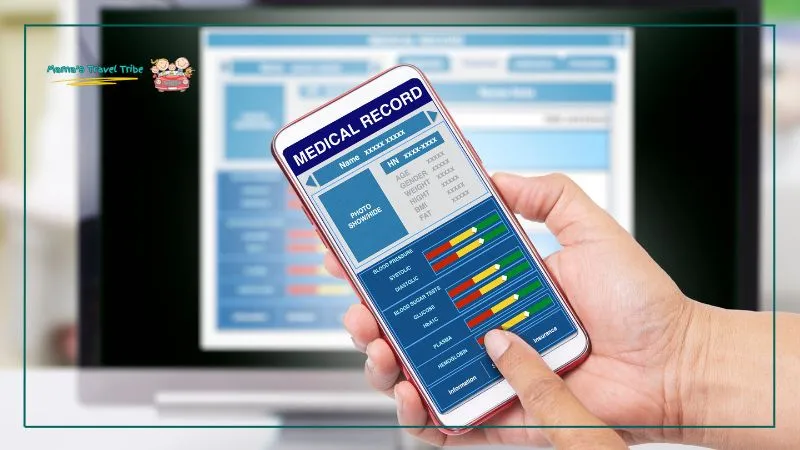
Having your child’s medical records on hand can be a real lifesaver. Trust me, I’ve been there. If you need to visit a doctor while you’re traveling, having these records will help them understand your child’s health history quickly.
This can be crucial if your child has any allergies, chronic conditions, or previous health issues. You don’t need to bring a huge folder—just a few key documents will do. This can include vaccination records, a list of current medications, and any recent medical reports.
Keeping this information handy means you can get the right care faster, which is a huge relief when you’re in an unfamiliar place.
Insurance Information
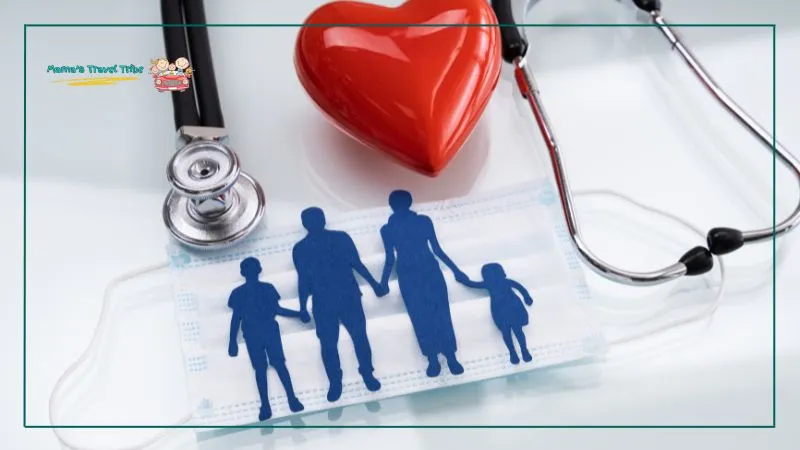
Before you head out, double-check your health insurance details. You need to know what kind of coverage you have at your destination. I always make sure to carry my insurance cards and have a clear understanding of what’s covered. Some insurance plans might not cover everything when you’re traveling, especially internationally.
It’s a good idea to call your insurance provider and ask about this. It’s just one more way to make sure you’re prepared for anything that might come up.
First Aid Kit
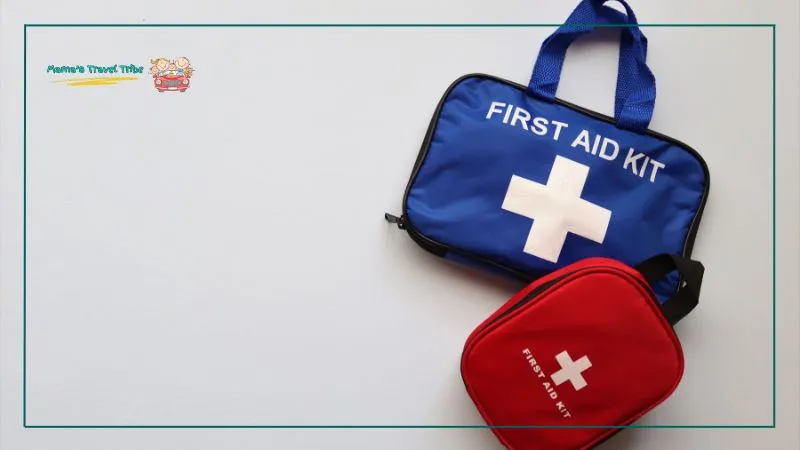
Packing a first aid kit is essential when traveling with kids, especially if one of them is sick. You never know when you might need it. My first aid kit always includes basics like band-aids, antiseptic wipes, and gauze pads.
You should also make sure to pack items specific to your child’s needs, like their inhaler or any special creams or ointments they might need.
Tips to Follow During the Trip When Traveling With a Sick Child
During the trip with a sick child, frequently sanitize hands and surfaces, and keep your child hydrated. Monitor their temperature and administer medication as prescribed. Provide comfortable clothing and a favorite blanket or toy for comfort. Choose quiet and calm activities to help them rest and recover.
Keep Hydrated
Keeping your child hydrated during the trip is super important, especially if they are sick. I always make sure to carry plenty of water and encourage my child to drink regularly. If your child is taking medications or has a fever, staying hydrated helps their body function better and feel more comfortable.
Sometimes, kids don’t realize they’re thirsty, so it’s up to us to remind them to take sips often. I also like to bring along some electrolyte drinks, just in case. They can be a lifesaver if your child isn’t drinking enough water or needs a little extra boost.
Remember, the goal is to keep them feeling as good as possible.
Rest Breaks
Planning for rest breaks is a game-changer, especially on long car trips. I find that stopping every couple of hours to let my child stretch and move around makes a big difference. It helps them relax and reduces any discomfort from sitting too long.
Plus, these breaks give everyone a chance to use the restroom, have a snack, and just take a breather. If your child is feeling unwell, these stops are even more important. They give you a chance to check on them, adjust their medications if needed, and make sure they’re as comfortable as possible.
It’s all about making the journey easier for them.
Comfortable Clothing
I always choose loose, breathable clothes for my child. Layers are key because they can easily take off or put on a jacket if they get too hot or cold.
I also pack an extra set of clothes in case of spills or accidents. Being comfortable helps them feel better and makes it easier for them to rest. It’s such a simple thing, but it can really improve their overall experience. And don’t forget comfy shoes or slippers for the car or plane!
Hygiene

Maintaining good hygiene is crucial, especially if your child is sick or immunocompromised. I always carry hand sanitizers and wipes to clean surfaces like tray tables, armrests, and door handles. I also remind my child to wash their hands often, especially before eating.
Using hand sanitizers when soap and water aren’t available is a good habit to get into. Keeping things clean not only protects your child but also makes me feel more at ease knowing I’m doing everything I can to keep them healthy. It’s all about being proactive and careful during the trip.
If your child is around 6 months old and you’re preparing to fly, you might find ‘Flight-Ready Tips for Your 6-Month-Old: Proven Advice‘ helpful.
Air Travel Specific Tips When Traveling With a Sick Child
When flying with a sick child, choose seats near the bathroom for easy access. Use the overhead air vents to improve ventilation. Pack extra fluids, snacks, and a travel pillow for comfort. Keep medications and a thermometer handy in your carry-on. Inform the flight crew so they can assist if needed.
Ear Pressure
Flying can be tough on little ears, especially during takeoff and landing. I’ve found that giving my child something to chew on, like gum or a pacifier, can really help. If your child is younger, having them drink from a sippy cup works wonders.
This simple trick helps equalize the pressure in their ears and can make the whole experience much more comfortable. I always make sure to have these items handy and ready to go as soon as the plane starts to ascend or descend.
It’s a small step that can prevent a lot of discomfort and keep your child happier throughout the flight.
Seating
Choosing the right seat on the plane is crucial when traveling with a sick child. I always try to book seats that are close to the bathroom. This makes it easier if my child needs to go frequently or if we need to handle any sudden emergencies.
Extra space is also a big plus. Sometimes, you can find seats with a bit more legroom, which allows your child to lie down and rest if they need to. It’s all about making the flight as comfortable as possible for them.
Being prepared and thinking ahead can make a big difference in how smoothly the journey goes.
Considering a car seat for your trip? Check out ‘11 Expert Tips for Traveling with a Car Seat‘ for essential advice on secure installation and travel.
And to ensure your car seat is up to airline standards, explore ‘Top 11 Airline-Approved Car Seats for Hassle-Free Journeys.’
Avoid Crowds
Airports and planes can be crowded places, which isn’t ideal when you’re traveling with a sick child. I always try to avoid crowded areas as much as possible.
I also look for quieter spots in the airport where we can wait more comfortably. On the plane, I choose seats away from the busiest areas, like the galley or lavatories. This not only reduces our exposure to germs but also makes it a bit more peaceful for my child.
Keeping some distance from crowds helps in keeping my child safer and less stressed during the trip.
Tips To Follow When You Arrive at the Destination With a Sick Child
Upon arriving at your destination with a sick child, prioritize rest. Settle into a quiet and comfortable space quickly. Keep essential medications and hydration tools at hand. Monitor your child’s health closely and have contact information for local healthcare services ready. Ensure a calm environment to facilitate recovery.
Maintain Routine
Keeping a routine can be incredibly comforting for a sick child when you’re away from home. I always try to stick to my child’s usual schedule as much as possible. This means keeping regular meal times, nap times, and bedtimes. It helps provide a sense of normalcy in an unfamiliar place.
Bringing along a few favorite toys, books, or a special blanket can also make a big difference. These familiar items can help your child feel more secure and relaxed. It’s all about making the new environment feel a bit more like home, which can be very soothing for a sick child.
Monitor Symptoms
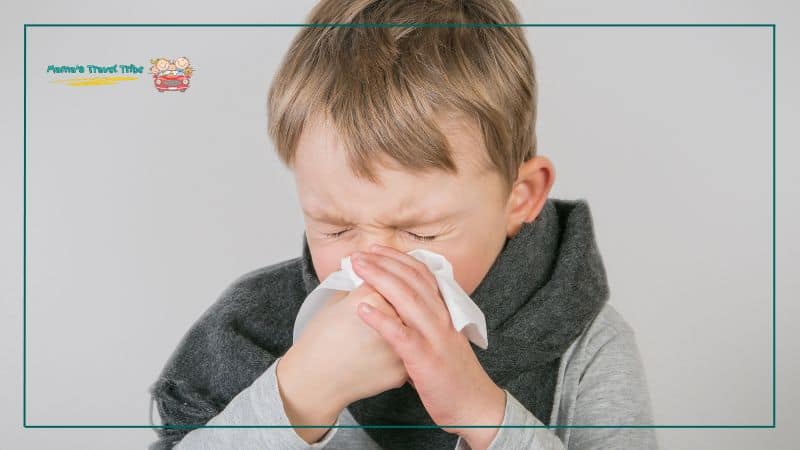
When you’re in a new place, it’s important to keep a close eye on your child’s symptoms. I make sure to monitor my child’s condition regularly, watching for any changes or signs that might indicate their health is getting worse.
Having a thermometer and any necessary medical devices handy can help you keep track of things. If your child’s symptoms worsen or you’re worried about their health, don’t hesitate to seek medical attention.
Safe Environment
Ensuring that your accommodation is safe and clean is crucial for your child’s well-being. I always do a quick check of the place as soon as we arrive. Look out for any potential hazards like exposed electrical outlets, sharp corners, or loose rugs that could cause falls.
If your child has allergies, make sure the place is free from dust, mold, or any other allergens. It’s worth spending a little extra time to make sure everything is safe and comfortable for your child’s stay.
Traveling With Sick Kids: Additional Tips
When traveling with sick kids, always have a plan for urgent care locations along your route. Carry extra supplies of all medical necessities, and maintain a routine to comfort your child. Keep activities low-energy and soothing. Inform travel and accommodation staff of your situation for additional support and convenience.
Snacks and Meals
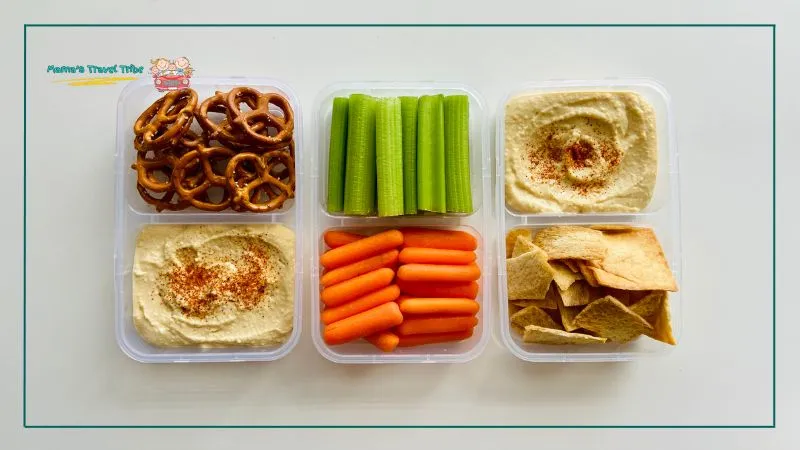
Bringing familiar snacks and meals for your child can be a lifesaver. When kids are sick, the last thing they need is an upset stomach from unfamiliar foods. I always pack some of my child’s favorite snacks, like crackers, applesauce, or granola bars.
These are easy to carry and can be comforting for them to eat. If you’re able to, prepare a few simple meals that you know they like and pack them in containers.
Having familiar foods on hand not only helps keep their diet consistent but also provides a bit of comfort during a stressful time. It’s one less thing to worry about when you’re trying to take care of your sick child.
Entertainment
Keeping your child entertained can make a big difference in how they feel. I always pack a selection of toys, books, and games to keep my child occupied. This can help distract them from feeling unwell and make the time pass more quickly.
Entertainment can be a great way to lift their spirits and make the trip a bit more enjoyable for everyone.
Emergency Plan
Having an emergency plan is crucial when traveling with a sick child. I always make sure to know the location of the nearest hospital or clinic at our destination. It’s also helpful to have a list of emergency contacts and any important medical information on hand. This includes your child’s medical records, insurance information, and a list of their medications.
Knowing what to do in an emergency gives me peace of mind and helps ensure that my child gets the care they need as soon as possible. It’s all about being ready for anything.
By following these tips, you can help ensure a safer and more comfortable trip for your sick child.
Conclusion
Traveling with a sick child requires extra care and preparation, but with the right steps, you can make the journey manageable and even enjoyable. Here’s a quick recap:
- Consult your pediatrician before traveling to ensure it’s safe.
- Pack all necessary medications and bring a copy of the prescription.
- Keep your child hydrated and take regular rest breaks.
- Choose comfortable clothing and maintain good hygiene.
- Know the location of the nearest hospital or clinic at your destination.
With these tips, you’ll be well-prepared to handle any situation and ensure your child’s comfort and safety during the trip. Safe travels!

